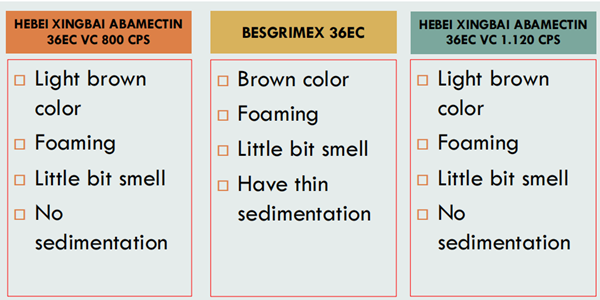
Dec . 23, 2024 12:18 Back to list
Exploring the Effects and Uses of Metamitron Herbicide in Agriculture and Pest Control
Metamitron Herbicide A Comprehensive Overview
Metamitron is a selective herbicide primarily used in agriculture for controlling a wide range of weeds, particularly in sugar beet crops. With its unique mode of action, it has become an essential tool for farmers seeking to maximize crop yields while minimizing the impact of unwanted plant species.
Chemical Composition and Mechanism of Action
Metamitron belongs to the chemical class of triazine herbicides. It works by inhibiting photosynthesis in susceptible plants. Specifically, it interferes with the electron transport chain within chloroplasts, effectively blocking the production of energy that plants need to grow. This mode of action is what makes metamitron particularly effective against broadleaf weeds and certain grasses while remaining safe for crops like sugar beets, which have developed a degree of tolerance to its effects.
Application and Usage
Metamitron is typically applied as a post-emergence herbicide. This means it is used after the weeds and the crops have emerged from the soil. The timing of application is critical; it should be done when the weeds are still young and actively growing. Farmers often use it in combination with other herbicides to broaden the spectrum of weed control and to delay the development of herbicide resistance among weed populations.
In terms of application rates, metamitron is often recommended at concentrations ranging from 1 to 2.5 liters per hectare, depending on the specific weed pressure and growth stage of the crop. It can be applied either as a solo treatment or as part of a tank mix with other herbicides or adjuvants, which can enhance its effectiveness.
Environmental Considerations
metamitron herbicide

Like many chemical herbicides, metamitron is subject to regulations designed to protect environmental and human health. It is crucial for users to adhere strictly to the recommended application guidelines to minimize any potential adverse effects on non-target organisms and ecosystems. Metamitron is primarily absorbed by plant roots and foliage, and its rapid degradation in the soil means it poses a lower risk of long-term soil contamination compared to some other herbicides.
However, it is essential to monitor its potential for water contamination, especially since runoff can occur following heavy rainfall. Integrated pest management (IPM) techniques can help reduce reliance on chemical herbicides like metamitron. By combining cultural practices, biological controls, and chemical tools, farmers can manage weeds more sustainably.
Resistance Management
One of the major challenges faced by agriculturalists today is the development of herbicide-resistant weed populations. To combat this, metamitron should be part of a broader weed management strategy that includes rotating herbicides with different modes of action, utilizing cover crops, and implementing mechanical weed control practices. Regular monitoring of weed populations is also critical to detect any signs of resistance early.
Conclusion
Metamitron remains a vital herbicide in crop production, particularly in sugar beet farming. Its selective action allows farmers to manage problematic weed species effectively while minimizing harm to the crop. However, as with all agricultural chemicals, it is important to use metamitron judiciously, following all safety guidelines and best management practices to ensure both agricultural productivity and environmental sustainability.
As the agricultural landscape continues to evolve with the increasing challenges posed by climate change and resistance management, metamitron will undoubtedly play a part in the integrated pest management strategies that farmers rely on. Continued research and development will be essential to maximize its efficacy and safety, ensuring it remains a viable option for future generations of farmers.
-
Best Abamectin 95% | Top Pesticide for Crop Protection
NewsJul.31,2025
-
Insecticide Spirotetramat 11% + Thiacloprid 11% SC at Good Price
NewsJul.30,2025
-
Best Abamectin SDS - Premium Quality & Reliable Safety Data
NewsJul.29,2025
-
Agrochemicals Pesticides Solutions for Sustainable Farming
NewsJul.29,2025
-
High-Quality Tebuconazole Fungicide for Crop Protection at Best Price
NewsJul.29,2025
-
Chlorfenapyr 8% + Clothianidin 20%SC Pesticide Mixture for Effective Pest Control
NewsJul.28,2025
